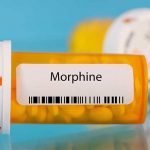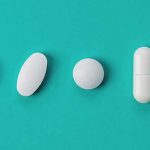- Extended-Release Hydromorphone
- What Does Generic Hydromorphone Look Like?
- How To Identify Fake Dilaudid
- Dilaudid Overdose
Dilaudid (hydromorphone hydrochloride) is an opioid analgesic (pain reliever) that comes in tablet or liquid form. The tablets look different depending on their strength. The liquid form is either an oral solution or an injection.
The tablet form of Dilaudid is available as:
- a round, orange 2 mg tablet with an “a” or “k” on one side and “2” on the other
- a round, yellow 4 mg tablet with an “a” on one side and “4” on the other
- a bisected, triangular, white 8 mg tablet with “aa” on one side and “8” on the other
Round Dilaudid tablets have flat faces with beveled edges. The triangle tablet has rounded sides and corners.
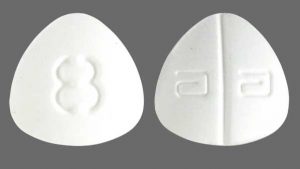
The liquid form of Dilaudid is clear to pale yellow and slightly thick. It comes as:
- a 473 mL brown bottle of oral solution
- a prefilled syringe for injection
- a single-dose glass vial for injection
- a multi-dose glass vial for injection
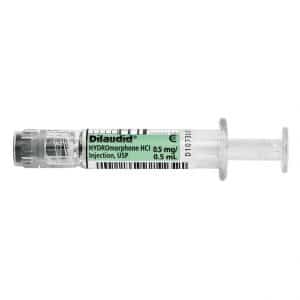
Extended-Release Hydromorphone Identification
Extended-release hydromorphone is branded as Exalgo. It has the same active ingredient as Dilaudid but is much more potent because it’s released slowly into your body throughout the day, rather than all at once (immediate-release).
Exalgo (hydromorphone extended-release) comes as:
- round, red tablets with “EXH 8” on one side (8 mg)
- round, dark yellow tablets with “EXH 12” on one side (12 mg)
- round, yellow tablets with “EXH 16” on one side (16 mg)
- round, white tablets with “EXH 32” on one side (32)
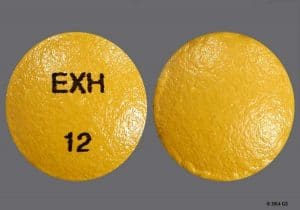
What Does Generic Hydromorphone Look Like?
Dilaudid is one brand name for hydromorphone, but it’s not the only brand. As with most drugs, generic formulations of hydromorphone are available.
According to the University of Michigan Health, generic hydromorphone tablets may look like:
- round, white, engraved with “2” and “M” (2 mg)
- round, white, bisected, engraved with “2” and “54 743” (2 mg)
- round, white, engraved with “4” and “M” (4 mg)
- round, white, engraved with “4” and “54 196” (4 mg)
- round, white, engraved with “4” and “54 609,” bisected (4 mg)
- round, white, engraved with “54 425,” bisected (8 mg)
- round, white, engraved with “8” and “E” (8 mg)
- round, white, engraved with “54 403,” bisected (8 mg)
- triangular, white, engraved with a “P,” inverted “P,” and “8,” bisected (8 mg)
- round, orange, engraved with “2” and “P” (2 mg)
- round, blue, engraved with “2” and “E” (2 mg)
- round, beige, engraved with “4” and “E” (4 mg)
- round, yellow, engraved with “WPI 3739” (12 mg)
- round, yellow, engraved with “WPI 3630” (16 mg)
- round, brown, engraved with “WPI 3629” (8 mg)
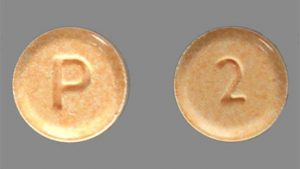
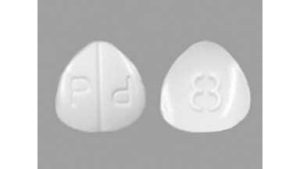
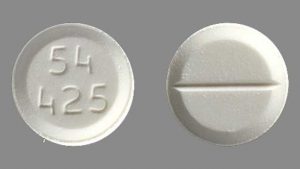
How To Identify Fake Dilaudid
If you’re getting Dilaudid with a prescription from a licensed healthcare professional and filling it at a registered pharmacy, your Dilaudid is real. If you’re buying it online, on the street, or from an acquaintance, it might be fake.
It’s good to know how to identify fake Dilaudid if you get it from a questionable source. Even some online pharmacies that seem legitimate sell fake or inferior pills.
Counterfeit Dilaudid tablets can look almost identical to real Dilaudid. But there may be some imperfections that show the difference.
Fake pills are made with pill presses that are usually lower quality than the machines that make legitimate brand-name drugs. The result may be a crumblier texture and a more blurred or shallow stamp (the number or letter engraved on it). The bisecting line may be off-center or less clean.
If you’re familiar with real Dilaudid, you may notice a difference in taste, texture, or color.
There’s no telling what might be in Dilaudid that you buy on the street. Many street drug manufacturers cut hydromorphone with powders like laundry soap or baby laxatives. Some lace it with other drugs, including fentanyl, making it easy to overdose.
Dilaudid Overdose
If you’re concerned that a loved one may be abusing Dilaudid, knowing the signs of opioid overdose may help save their life. As a central nervous system (CNS) depressant, Dilaudid can cause life-threatening respiratory depression if you take too much.
Signs of a Dilaudid overdose include:
- cold, clammy skin
- blue skin or nails
- shallow breathing
- slow heart rate
- low blood pressure
- pinpoint pupils
- severe sedation or coma
Naloxone, an opioid overdose reversal agent, is widely available at major pharmacy chains and can be used to keep someone breathing until medical help arrives. Opioids cause many fatal overdoses, so it’s a good idea to have naloxone on hand if you’re taking Dilaudid.
Mixing Dilaudid with benzodiazepines, alcohol, or other opioids (even milder opioids like codeine, methadone, and buprenorphine) increases your risk of breathing problems and overdose.
Dilaudid (Hydromorphone) Abuse
Dilaudid is a painkiller for moderate to severe pain. As an opioid agonist, it activates opioid receptors and changes how your brain perceives pain. Dilaudid is five to 10 times stronger than more common prescription drugs OxyContin (oxycodone) and Vicodin (hydrocodone).
While some healthcare providers us hydromorphone for chronic pain in cancer patients, it’s generally best used short-term under medical advice. Taking Dilaudid without a prescription, in higher doses than prescribed, or for longer than recommended is a dangerous game.
The US Drug Enforcement Administration (DEA) classifies Dilaudid as a schedule II controlled substance because it’s highly addictive. Drug abuse also raises the risk of serious side effects, overdose, and physical dependence.
Abusing Dilaudid makes it more likely that you’ll have side effects like:
- constipation
- nausea
- vomiting
- drowsiness
- dizziness
- lightheadedness
- sweating
- flushing
- dry mouth
- dysphoria or euphoria
- sedation
You may develop a physical dependence on Dilaudid after taking it for a few days or weeks. If you stop taking it suddenly, you’ll have withdrawal symptoms.
Dependence often goes hand-in-hand with addiction—when your body develops a need for drug use, your mind often does too. Once you’re addicted, it’s nearly impossible to stop.
Don’t wait until Dilaudid addiction takes over your life. Reach out to a specialist at Northeast Addictions Treatment Center today to learn about our outpatient addiction treatment options.
Sources
- Drug Enforcement Administration — Counterfeit Pills
- National Library of Medicine: DailyMed — Label: Dilaudid - hydromorphone hydrochloride injection, solution
- National Library of Medicine: DailyMed — Label: Dilaudid - hydromorphone hydrochloride tablet Dilaudid - hydromorphone hydrochloride solution
- University of Michigan Health — hydrocodone (oral)
Written by
Northeast Addition Editorial Team
©2024 Northeast Addition Center | All Rights Reserved
This page does not provide medical advice.








